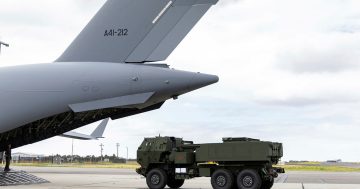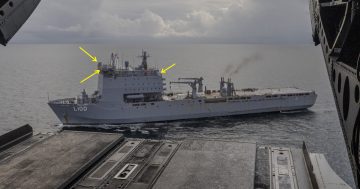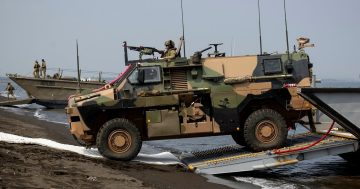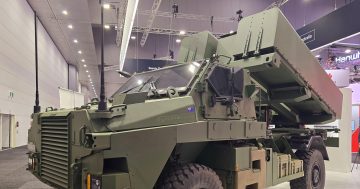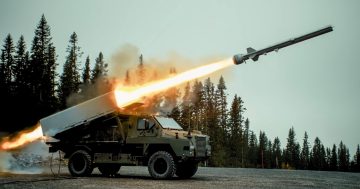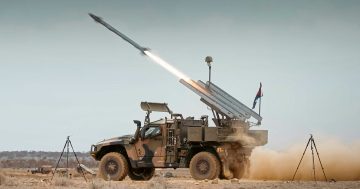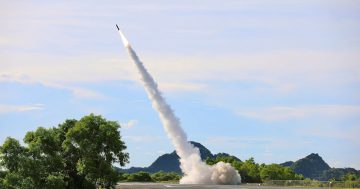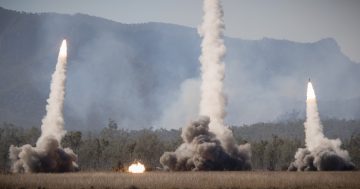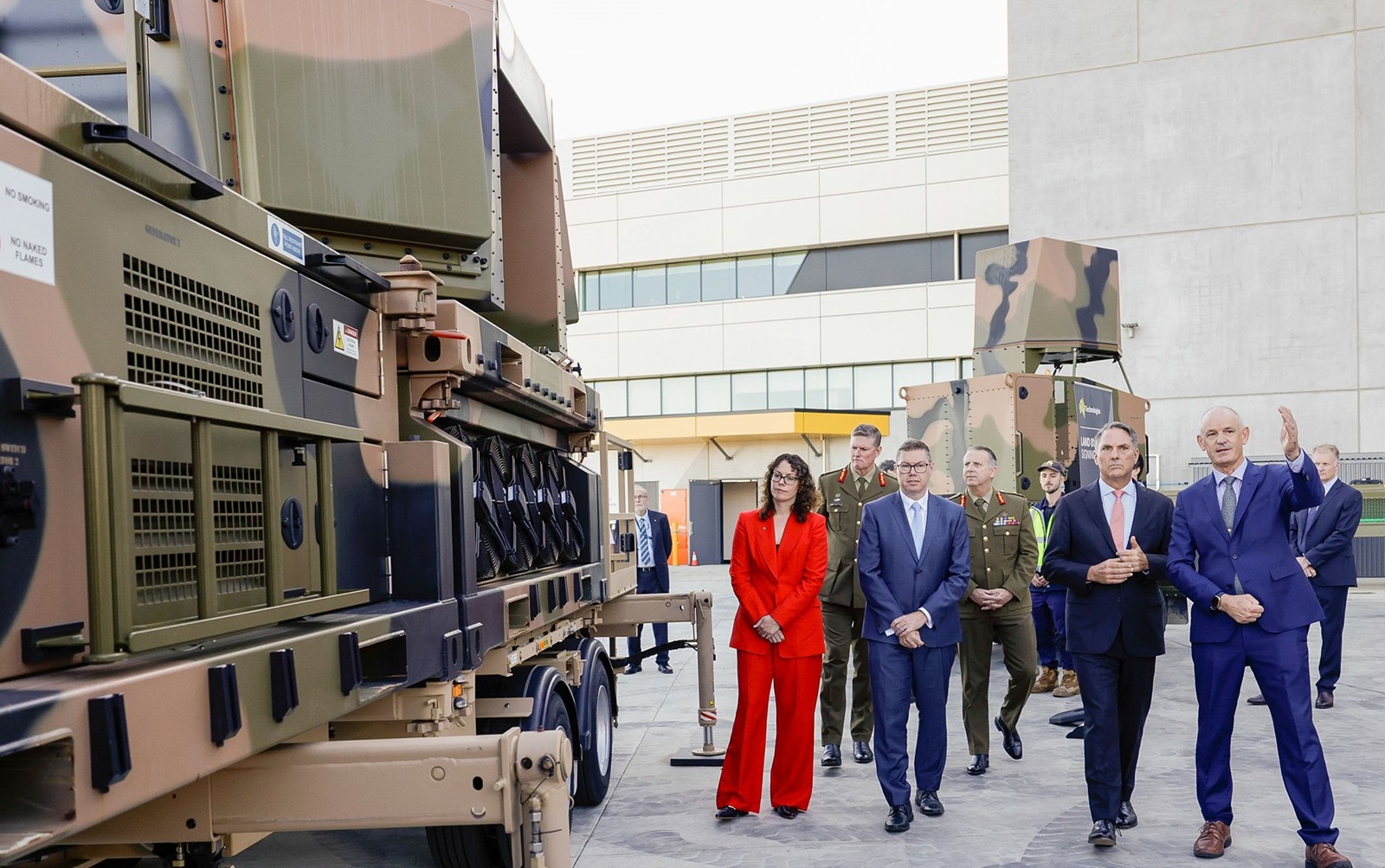
Member for Canberra Alicia Payne, Minister for Defence Industry and Capability Delivery Pat Conroy, Defence Minister Richard Marles, and CEA Technologies CEO Mark Foster tour the company’s Fyshwick facility. Photo: LinkedIn.
Canberra-based CEA Technologies has signed a $272 million contract with the Commonwealth to provide 14 multi-mission phased array radars (MMPARs) for the Australian Army’s Project LAND 8113 Phase 2 Second Long-Range Fires Regiment.
The project has seen the former LAND 4100 land-based maritime strike (LBMS) requirement merged with LAND 8113 Phase 2 in June according to a report in Australian Defence Magazine (ADM), a move Defence said will “further expand Army’s ability to deliver persistent land-based maritime strike”.
In December, the Commonwealth announced it had shortlisted two missile systems for LAND 8113 Phase 2 – additional units of M142 HIMARS truck-mounted rocket launchers paired with new Precision Strike Missiles (PrSM) Increment 2, or the Australian-developed Strikemaster system which has a pair of Naval Strike Missiles (NSMs) mounted on a Thales Australia Bushmaster chassis.
Despite not yet having announced which missile system it will acquire, Defence says CEA Technologies – which is 51 per cent owned by the Commonwealth – will provide the MMPARs to support Army’s long-range fires capability and provide greater monitoring of potential threats.
The new radars will likely be truck-mounted, and will be based at the 10th Fires Brigade at Edinburgh in Adelaide.
Defence Minister Richard Marles said the new radars would contribute to the security of the region while also supporting a world-leading defence business and local jobs.
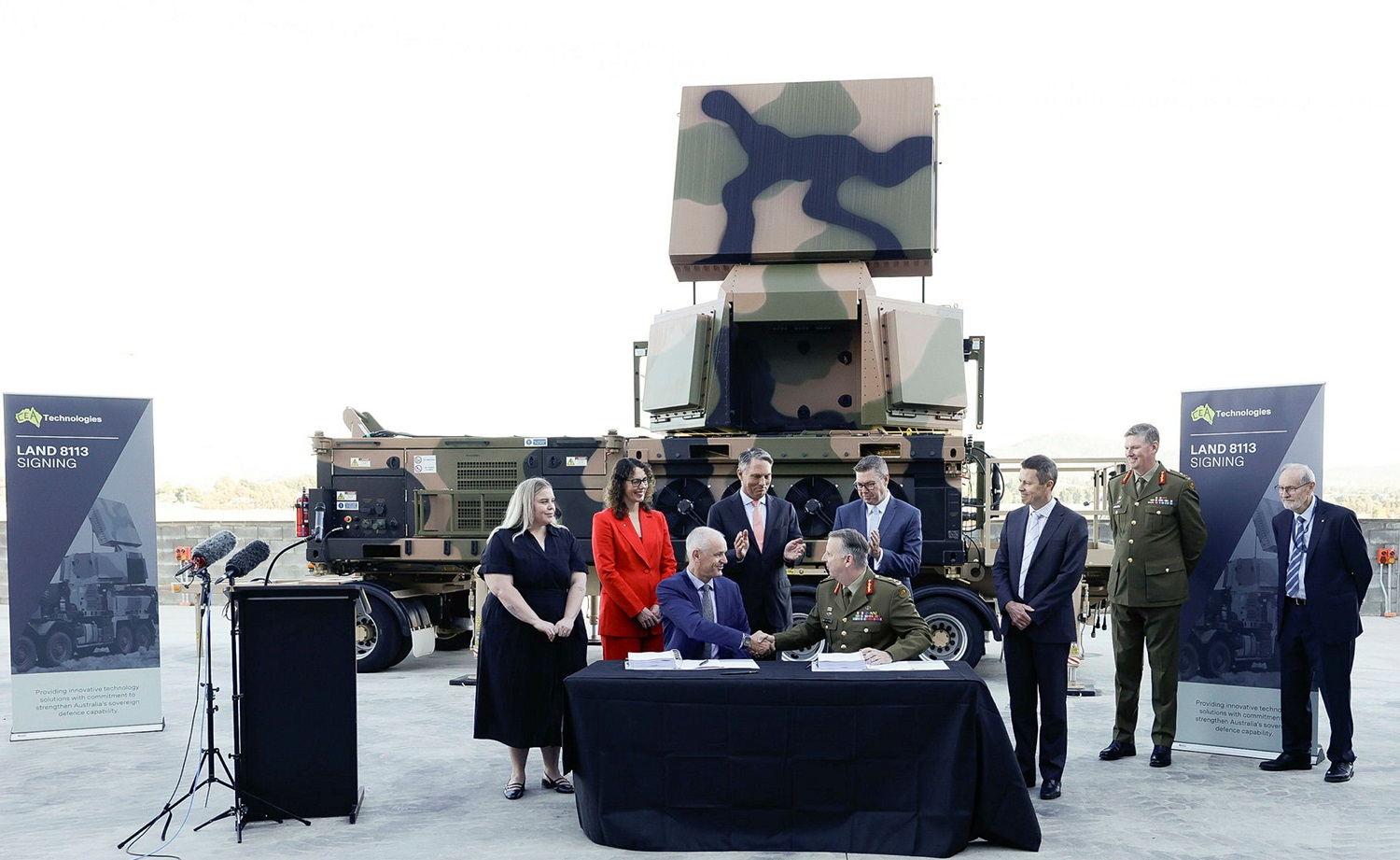
CEO of CEA Technologies Mark Foster and Army General Jayson Blaine sign the contract for the new radars. Photo: ADF.
“In line with the 2024 National Defence Strategy, today’s announcement will ensure Army’s long‑range fire capabilities are bolstered and ensure we deliver an integrated, focused force,” he said.
“CEA produce the best phased array radars in the world. They are one of the great success stories of Australian defence industry. And we are really pleased to be making this announcement, which supports 720 jobs right here at Fyshwick.”
Minister for Defence Industry and Capability Delivery Pat Conroy said CEA Technologies was one of Defence’s most critical suppliers.
“These domestically manufactured radars are testament to the ingenuity and expertise in Australia’s defence industry,” he said.
“This investment is another example of the Albanese Government’s commitment to a future made in Australia, and the defence industry is an essential part of that future.”
Minister for Finance and ACT Senator Katy Gallagher said the contract was an important investment for Canberra’s economy and would sustain hundreds of good local jobs.
“Our government is committed to building the nation’s advanced manufacturing industry – including here in the ACT – to ensure high-quality, well-paid jobs into the future,” she said.
Mr Marles wouldn’t be drawn on a question on whether the Navy’s planned Project SEA 3000 general-purpose frigates would be equipped with CEA radars, given the nature of the project is to get ships into service as soon as possible.
“I think let’s see how it unfolds in relation to the general-purpose frigate,” he said.
“The point I’d make in relation to the general-purpose frigate is that the priority here is speed into service. This will be one of the fastest, if not the fastest, acquisitions that we have seen in peacetime Australian history, and that remains our priority.
“The general-purpose frigate is going to have its life within the Royal Australian Navy and I’m not going to speculate on how that plays out. But our priority right now is to see that those frigates are brought into service as quickly as possible.”


